We disassemble the case from an old 1850s tintype photograph to clean the glass and see what’s inside
I thought I was buying a Daguerreotype
I bought this tintype (also known as ferrotype) photograph from an online dealer probably 15 years ago. I paid too much for it because it was advertised as a Daguerreotype, and I didn’t know any better.
When it arrived in the mail, I was disheartened to find that I couldn’t really see the fellow very well because of 160 years worth of crud on the glass. Finally, after all these years, I decided it’s time to let the world see this man’s face again. My impetus was the urge to make a video discussing this portrait, to fit into my recent series of other videos focused on antique photographs.
Taking the decorative tintype case apart was easy
I didn’t really know what I was getting into with taking the case apart — I’ve never done it before. I didn’t want to damage the case, but since it’s in such poor condition already, I made the decision to risk the case in order to get a better look at the portrait inside. As it happens, the case is very easy to disassemble and reassemble. These were designed to be easily put together in the studio for customers.
View the video or check the photographs below for the step-by-step process.
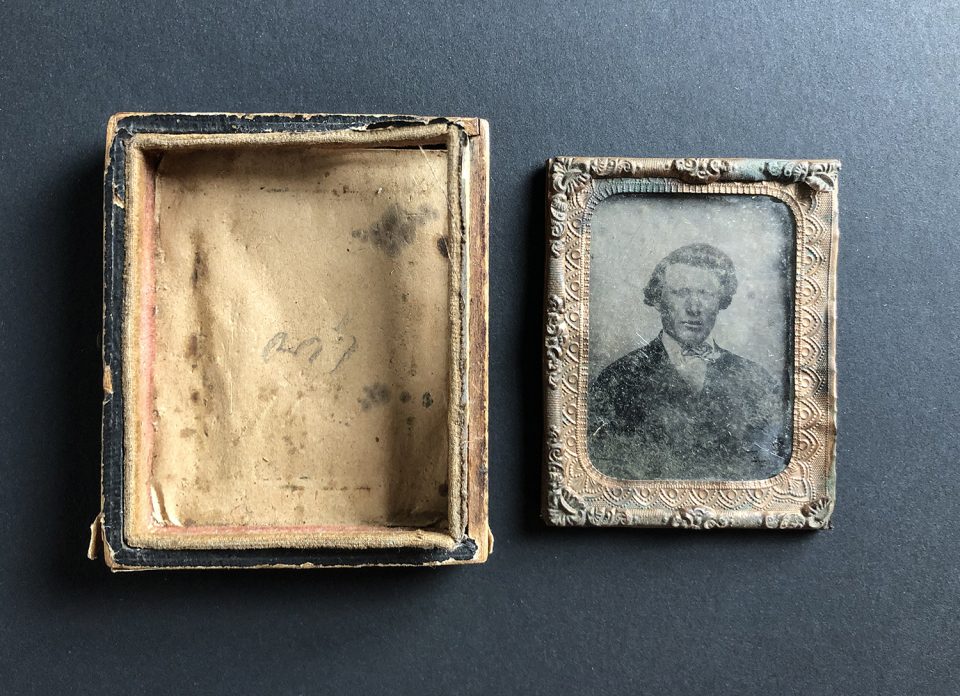
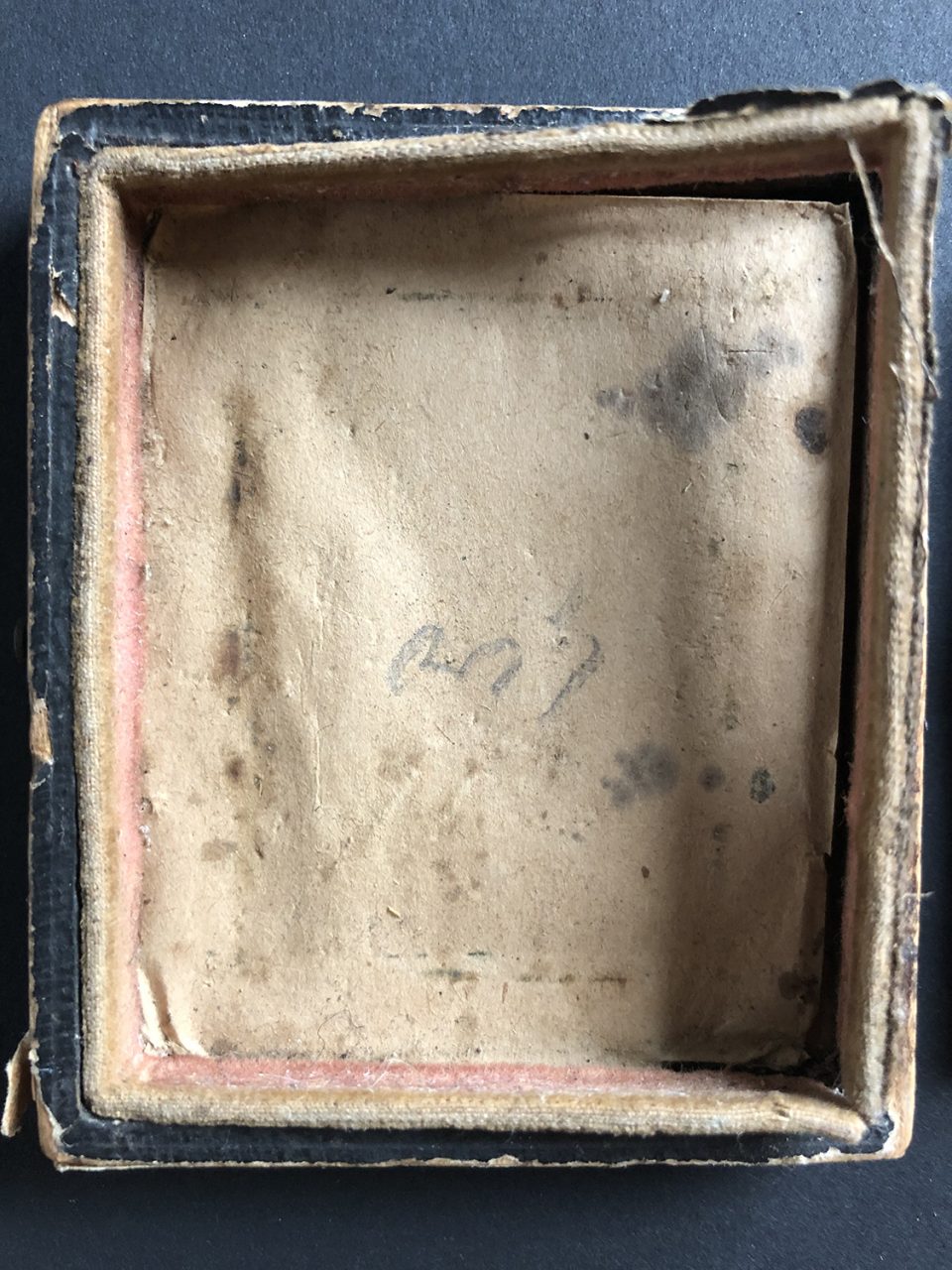
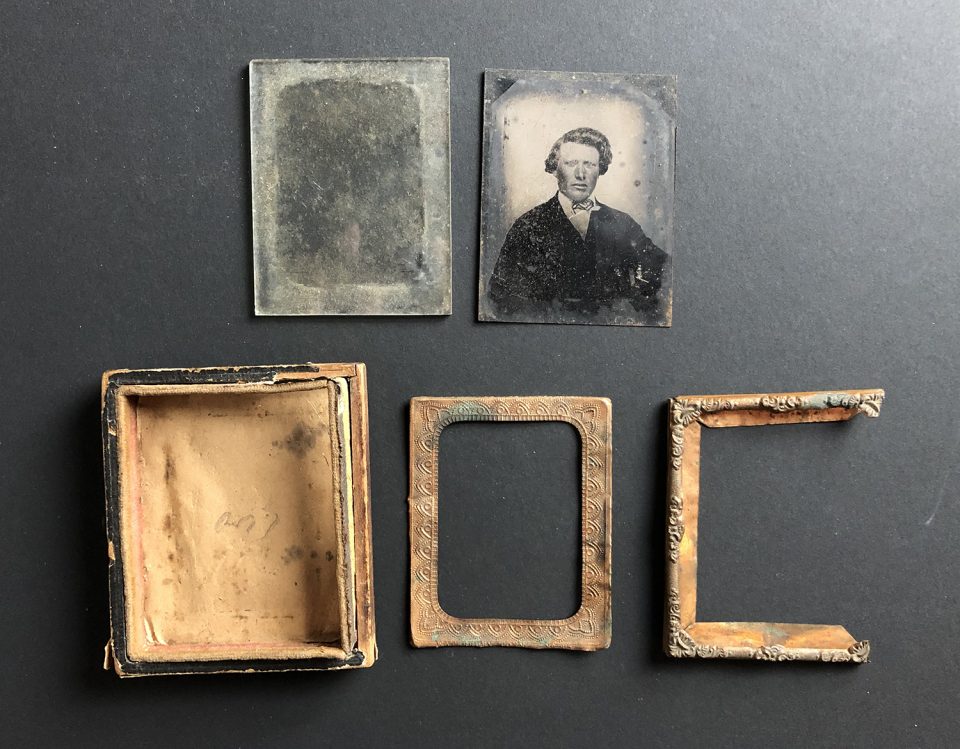
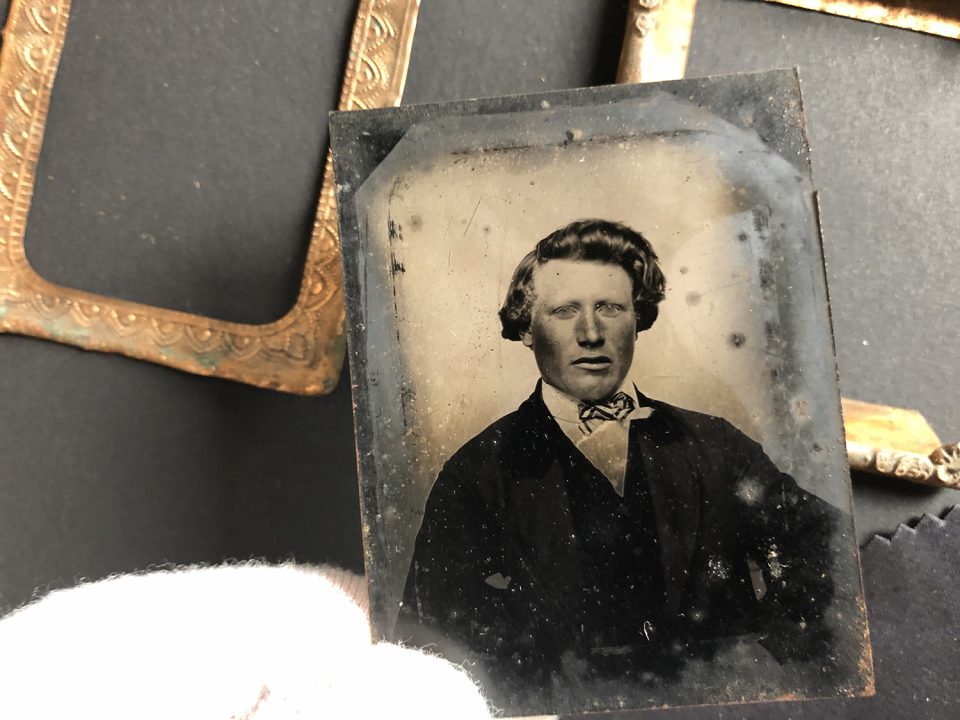

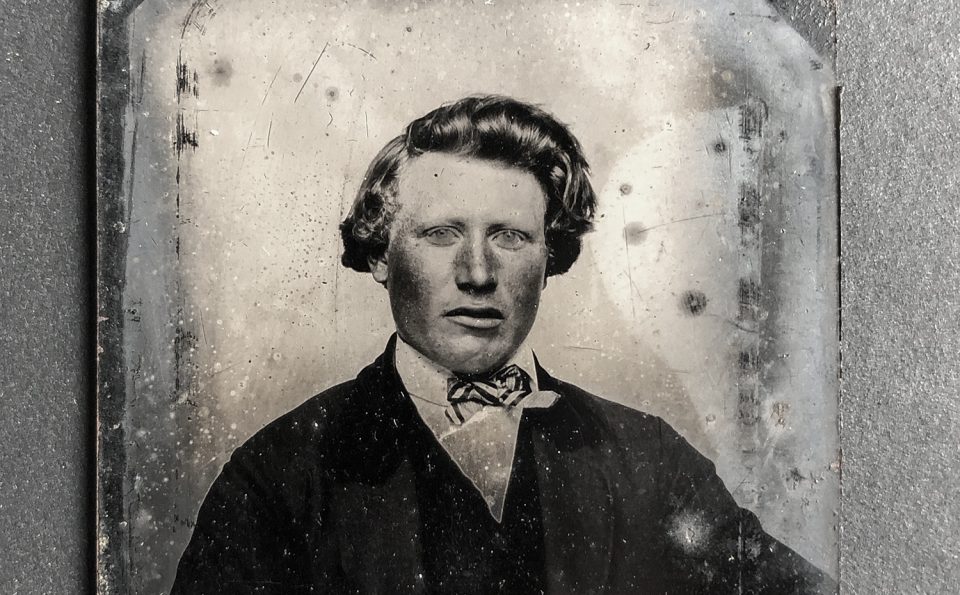


Learn more about tintypes with these books on Amazon
Thanks for reading
Be sure to visit me on Facebook, Instagram or Pinterest, or on my website at keithdotson.com.
~ Keith
This blog post contains an Amazon Affiliate link. I may earn a small commission on qualifying purchases.
